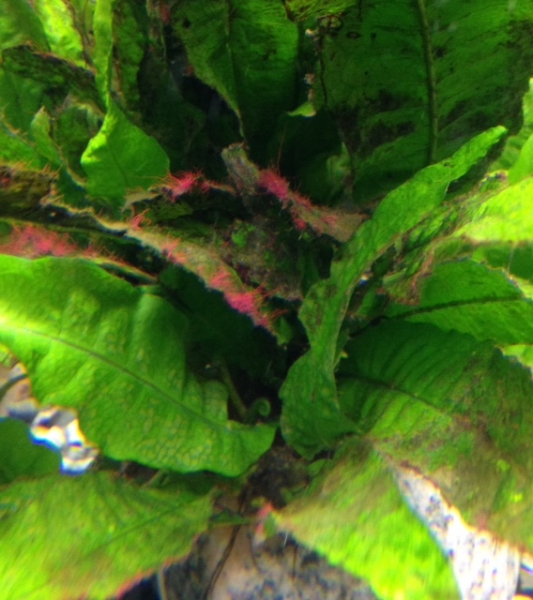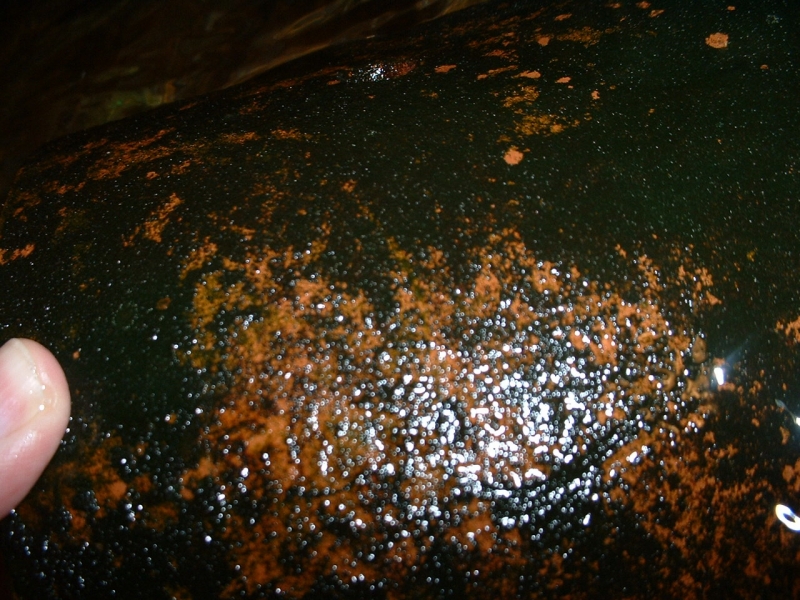Algae living plant is only natural
Algae living plant is often mistaken for grunge or bad bacteria, however, it’s anything but. Where you find a healthy, cycled body of water you’ll find algae
Goldfish make waste from which ammonia forms. Ammonia is converted to nitrites, and then into nitrates within a short time. This amazing conversion is performed by beneficial bacteria. Nitrates are the food source for algae. Fish eat algae, make waste, and the cycle of life begins again. Algae forms only in established aquariums or ponds. Water turning green is known as green water algae. You may also notice free floating algae at your pond’s surface: known as string algae. A build-up of algae on the sides of your aquarium or pond is known as substrate algae
Algae the living plant
Certain forms of algae keep oxygen from entering the water by covering the surface, such as string or blanket algae. One form of algae reduces oxygen levels in water by taking up space, and pushing oxygen out of the water, such as green water algae. These forms produce dangerous conditions for goldfish and beneficial bacteria alike
The only safe form of algae for goldfish is ‘substrate’ algae
Goldfish love to nibble on algae. It’s a very healthy snack. Algae provides a rich source of nutrients and roughage. Fish have been known to live off nothing but algae, and be all the healthier for it
How to grow algae
Natural sunlight or a simple plant light, combined with the presence of nitrates encourage algae growth in water. Algae creates a balanced ecosystem, forming only in cycled aquariums or ponds
Free floating, green water algae cannot tolerate moving water. If you have green water your fish are at risk for suffocating. Include a pond pump in your set up to clear the body of water, forcing the algae on to substrate
Algae living plant
Water treatments convert nitrates to a safer form, however, algae can still feed on the toxin. Use an algae scraper to remove it from the front and sides of your aquarium if you don’t like the look, however, leave it growing on the back so your fish house reaps the benefits. Another method of reducing algae formation is to add several plants to the aquarium or pond to increase the competition for the toxin
Use caution when removing algae if you don’t like the look, as nitrates will spike to dangerous levels when eliminated suddenly
Algae living plant has all of the vitamins and minerals goldfish need. Of course, if they dwell in a small fish house, and we don’t supplement their diet, they will consume all of the algae in a short time
Increase the amount of algae in your tank or pond by allowing nitrates to increase gradually. Use water treatment designed to convert the toxin. Gradually reduce the amount of water you’re exchanging over an extended period of time. The algae will grow gradually also, reducing nitrate levels, offering a low maintenance set up
No other plant can compete with algae in nitrate reduction
The circle of life of the aqua world our goldfish live in may very well begin and end with plants. The goldfish eat vegetation which turns to waste, which turns to ammonia. Beneficial bacteria form to feed on it producing nitrite and then nitrates. Nitrates are the food source for vegetation. Our goldfish feed on the vegetation, creating more waste
Algae living plant
All food is not created equal. The higher the protein value in fish food, the higher the nitrate levels will climb. Increased levels of protein create a larger colony of beneficial bacteria because of the additional protein value. Algae wafers add roughage to the diet, but are very low in protein because the algae is dead. There is no substitute for living algae, and there is basically no fish food that equals its value. The healthiest goldfish live in cycled tanks or ponds that are lined with a lush layer of algae the living plant

Pink fungus has found a happy home on a fake plant, and is often, but mistakenly referred to as pink algae
Color of algae
While uncommon, fish keepers talk about orange, pink or red algae, yellow, blue or even white algae, although, this isn’t actually algae. It’s fungus that has taken on a few characteristics of algae. The only similarity between the two; both are made up of living organisms. Algae is green or brown, and found only in healthy ecosystems that contain beneficial bacteria. Unlike fungus, algae consumes nitrates and is a healthy food source
Causes of these strange colored fungus are still debated, however, water value and lighting typically come into play. Our freshwater source contains metals, minerals and other substances; some healthy, some not so healthy; some react to intense lighting often used in fish keeping. Review water report if in doubt
The only difference between green and brown algae is that green gets more sunlight, and contains chlorophyll because of it
Algae living plant
Algae living plant is either green or brown in color, and appears darker brown when submerged beneath water where the light may be dimmer. This amazing plant forms in water only, feeds on nitrates and absorbs Co2 from water in light

The fluorescent green color in the photo above is transforming algae due to the intense lighting. Notice how the plant is rising above the water line, acting out of character. Within a few short weeks the algae has become well established due to high levels of nitrates and intense lighting. Related to string algae, it’s considered as invasive because it grows rapidly and has the power to cover the surface within a few days
Algae takes a great deal of time to become established, however, it’s well worth the wait. If you don’t like the look, but want to reap the benefits, use an algae scraper to clear the front, and even the sides of the plant, leaving the back

Algae feeds on nitrates and provides a very nutritious meal high in roughage
In the wild competition for food is fierce. Only the fastest or the luckiest fish feeds on fish eggs, small fish or worms. Because of it, goldfish feed mostly on vegetation even though they are omnivores
The algae on this terracotta tile is real algae. If you look closely, you’ll see the structure is made up of tiny diatoms; living organisms. In a natural body of water you won’t see fish bobbing at the surface, suffering from floating issues caused by constipation. In the wild, fish eat small amounts consistently throughout their waking hours. Most of their diet consists of algae and other nutritious vegetation, such as duckweed, running a close second to algae in value
Algae, made up of microorganisms or diatoms, contain protein. The levels of protein are just right for goldfish; not so high that it raises nitrates, but high enough to provide the protein levels that fish need for good health. Goldfish can live off nothing but algae, and be all the healthier for it
Algae is Mother Nature’s way of icing the cake on the nitrogen cycle so to speak. The greater the amount of algae in a goldfish house; the less food needs to be given; the fewer nitrates produced and the less water needs to be exchanged
Copyright 2007
Author: Brenda Rand